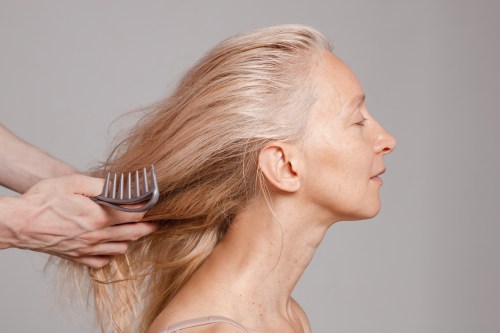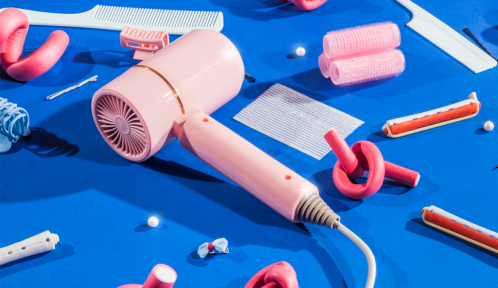Heat damaged hair? Here’s how to deal
Hair experts reveal the signs your locks have heat damage, plus the best ways to repair it.

While embracing your natural texture is becoming more popular in the world of hair care, there is something enticing about using those beloved hot tools to straighten, curl, wave, or crimp your strands (you always want what you don’t have, after all). And, even for those of us that do sport our tresses au natural, living that busy-girl life can often require a little leaning on your trusty blow dryer for salon-like results in minutes (or, at the very least, dry locks).
These hot tools are great and all, but the problem is that, when misused or overused, they can cause major damage to your tresses. And no—heat damage doesn’t only happen if you use these on the reg. You can scorch your strands in one simple swipe, twirl, or curl. “Heat damage occurs whenever the hair has become compromised due to a source of heat, meaning it no longer appears or behaves as normal,” shares Chadwick Pendley, Ouidad’s master artistic educator. “This means any prolonged exposure to a heat source from blow drying improperly or excess exposure to a heated styling tool.”
That’s not to say you shouldn’t use them at all—there are just certain steps you should take to ensure your locks stay healthy and better able to embrace the heat.
I touched base with the hair pros to get the scoop on just how to know if your strands are scorched—and if there’s any hope in replenishing them to a healthy state. (Good news: there is.)

Check those ends
Chances are you’ve heard from stylists time and time again that your ends need to be snipped. That’s because the ends of your strands are actually the oldest few inches on the hair shaft and can easily be snagged, split, or damaged due to friction, breakage, or lack of moisture. “Frayed or split ends that can’t hold moisture result in very disobedient and uncontrollable results when it comes to styling,” warns Pendley. “The hair will look dull and dry and have little to no shine.” Pendley warns that major heat damage can make the ends of the hair appear lifeless.
Not sure if your ends are damaged or just need some TLC? Hair pro and celebrity stylist for Seven Haircare Cash Lawless uses the friction test to examine their status. “If your hair is severely damaged, you will see white nodules at the ends of your hair,” says Lawless. “Use a friction test by sliding one hair strand (with a white nodule) at the end between two fingernails and if the white tip breaks off easily, heat damage is present.”
Examine your texture
When strands are out of whack, the texture of the hair shaft is usually the first telltale sign. The same is true when it comes to scorching your locks. “The first major sign of heat damage is frayed hair,” shares Sara Caroline, core educator for Bosley Professional Strength. “If the hair is damaged due to heat, it will feel singed and appear extremely split.”
If you have textured tresses, it may be a tad easier to detect any changes once you revert back to your natural texture. For curly or wavy girls, scorched strands could result in a looser or bent curl pattern or wave. This does not have to occur consistently throughout the hair—it could straighten out just a section or in some cases one or two ringlets throughout the head.
Repairing your locks
While most stylists state that curing heat damage is not quite black and white, the one rule of thumb (that no one wants to hear) is that the only true way to eliminate heat damage is to cut it out entirely. But that doesn’t mean you have to toss your curling iron and hair dryer to the curb—for those that can’t live without the heat, that it’s all about keeping things as healthy as possible.
“Heat-damaged hair is like a torn piece of paper,” says Lawless. “No matter what you do, it will not be the same again, but there is a path to recovery.” Phew.
Hair is mostly made of protein. So, implementing sufficient protein to your strands, whether by mouth or by topical treatment, will add strength back to your locks. “When you have heat-damaged hair, protein treatments will help to mend broken bonds and seal split ends,” suggests Caroline. “It also helps though to cut your hair a good amount in order to grow back healthy and strong.”
The pros also suggest applying a good heat protectant to your strands before styling—try Josh Rosebrook’s Styling Cream. Another tip? Limit the amount of heat exposure each week. It’s always a reprieve to air dry, after all.
To keep those locks healthy, these are the best supplements for thicker, fuller hair. But will taking hair growth supplements make hair grow all over your body?
Sign Up for Our Daily Newsletter
Get all the latest in wellness, trends, food, fitness, beauty, and more delivered right to your inbox.
Got it, you've been added to our email list.










